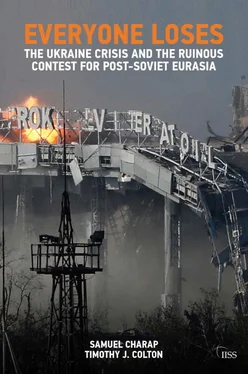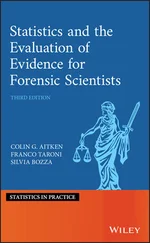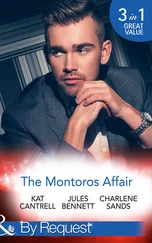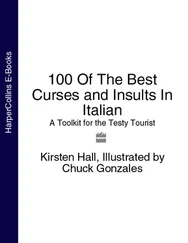The problem of the In-Betweens
On what principles was a post-Cold War order in the region to rest? After the dust of 1989–91 had settled, the answer was still unclear, although two of the suite advanced in the 1990 Charter of Paris for a New Europe offered clues. On the one hand, the document heralded national ‘freedom of choice’ on security matters. On the other, it nodded to a principle of ‘indivisibility’: ‘Security is indivisible and the security of every participating State is inseparably linked to that of all the others.’ The two tenets pointed in opposing directions, as time was to tell.
At the very start, the post-communist states of East Central Europe advanced incremental security remedies, such as reform of the Warsaw Pact and dialogue with NATO. More ambitiously, Czechoslovakia plugged a CSCE-based European Security Commission to supplant both venerable alliances. The outgoing Bush administration punted, getting NATO to birth a North Atlantic Cooperation Council whose parleys were good for ‘a photo op and an exercise in high political symbolism’ but little else. [28] Strobe Talbott, Russia Hand: A Memoir of Presidential Diplomacy (New York: Random House, 2002), p. 94.
It also urged the East Central Europeans to get hold of regional security measures on their own. Only in 1993, with the arrival of Bill Clinton in the White House, did Western policy planners engage in the process, with the Americans taking the lead.
They did so in part at the behest of the leaders of the erstwhile Soviet satellites who jettisoned their original reticence and pleaded for consideration of what up until then would have seemed an indecently radical response – admission of their nations to the NATO alliance. Motivations in East Central Europe were sundry, but the irreducible one was to find an international anchor – the same analogy Gorbachev employed with Bush in 1990 – in an environment awash in insecurity and unpredictability.
A majority of the players in the US government, including cabinet secretaries, diplomats, military brass and mid-level political appointees, preferred at the outset to leave the composition of NATO as it was, without recruitment of new members. Changes to NATO, it was argued, would subvert other priorities and be of no real benefit to it as a military organisation. More disconcerting was the chance that enlarging NATO would empower revanchist factions within the Russian polity and weaken Yeltsin. As Strobe Talbott, Clinton’s lieutenant for Russian affairs, expressed it, ‘If NATO adopted an anti-Russian rationale for taking in new members, it could tip the balance of forces in Russian politics in exactly the direction that we… most feared.’ [29] Ibid.
The sceptics lost the debate to a handful of pro-change policy entrepreneurs, spearheaded by Anthony Lake, Clinton’s national security adviser, and a bit later by Richard Holbrooke, then an assistant secretary of state.
The Russian response was scattershot. Not surprisingly, a sizeable subset of the Moscow establishment wanted nothing to do with an expanded NATO. The Foreign Intelligence Service spoke for them in late 1993 when it published a report warning that admission of former communist states ‘will be taken by a considerable part of Russian society as “the approach of danger to the Motherland’s borders”’. [30] The report was published in ‘Perspektivy rasshireniya NATO i interesy Rossii: Doklad Sluzhby vneshnei razvedki’, Izvestiya , 25 November 1993. For a summary, see Steven Erlanger, ‘Russia Warns NATO on Expanding East’, New York Times , 26 November 1993.
Yeltsin took a middle position, maintaining that NATO’s growth might be acceptable on one condition – that Russia be included in the process, as Gorbachev had hinted at for the Soviet Union several years before. He set this idea down in a letter to Clinton on 30 September 1993, and mentioned it in public on several occasions in 1994. [31] For the September letter, see Roger Cohen, ‘Yeltsin Opposes Expansion of NATO in Eastern Europe’, New York Times , 2 October 1993, http://www.nytimes.com/1993/10/02/world/yeltsin-opposes-expansion-of-nato-in-eastern-europe.html .
Meanwhile, Yeltsin’s foreign minister, Andrei Kozyrev, argued that enlargement was unnecessary since all states concerned, Russia included, were learning how to cooperate with NATO, and vice versa. In a December 1993 interview, he seemed to be asking what the fuss was all about: ‘We say to the [East Central Europeans]: why chomp at the bit to get into NATO when there is no need? Russia cooperates with the alliance, and you can do the same thing. But it’s not worth it to enlarge NATO quantitatively.’ [32] ‘Interv’yu c ministrom inostrannykh del Rossiiskoi Federatsii Andreem Kozyrevem’, Rossiiskaya gazeta , 7 December 1993.
It was in large part in deference to Russia that NATO’s first initiative was a soft-edged Partnership for Peace (PfP) programme approved in December 1993, with eligibility for any member of the North Atlantic Cooperation Council interested in working with the Alliance. For a time, PfP seemed to push NATO enlargement off the agenda. The US secretary of state, Warren Christopher, had sold PfP to Yeltsin in October as a transitional device, egalitarian in philosophy and of indeterminate duration. ‘There would be no effort to exclude anyone and there would be no step taken at this time to push anyone ahead of others.’ Yeltsin, with the tenet of indivisibility at the back of his mind, was delighted with the project and got Christopher to agree that the affiliation ‘would… be on an equal footing and there would be a partnership and not a membership’. ‘It would have been an issue for Russia’, Yeltsin went on, if the PfP rulebook ‘left us in a second-class status’, but on these terms he was eager to have Russia put in an oar. Christopher added, ‘we will in due course be looking at the question of membership [in NATO] as a longer term eventuality…. Those who wish to can pursue the idea over time, but that will come later.’ [33] Quotations from a declassified memo of the conversation at ‘Secretary Christopher’s Meeting with President Yeltsin, 10/22/93, Moscow’, http://cdn.warontherocks.com/wp-content/uploads/2016/07/Christopher-Yeltsin-1993-MemCon.pdf . See the discussion in James Goldgeier, ‘Promises Made, Promises Broken? What Yeltsin Was Told About NATO in 1993 and Why It Matters’, War on the Rocks, 12 July 2016, http://warontherocks.com/2016/07/promises-made-promises-broken-what-yeltsin-was-told-about-nato-in-1993-and-why-it-matters/ .
Not long thereafter, however, Clinton proclaimed in Prague that the question about enlargement was ‘no longer whether… but when and how’. [34] ‘The President’s News Conference With Visegrad Leaders in Prague’, 12 January 1994, http://www.presidency.ucsb.edu/ws/?pid=49832 .
Within months, ‘in due course’ and ‘longer-term eventuality’ had flown out the window and the NATO capitals were horse-trading over the details. After a breather so as not to jinx Yeltsin’s re-election chances in the 1996 presidential campaign, the admission process accelerated in late 1996 and invitations to the Czech Republic (having separated from Slovakia in 1993), Hungary and Poland were issued in 1997. They were received into the Alliance at a 50th-jubilee summit in April 1999.
Three considerations tilted the scales in American deliberations and shaped the United States’ general stance toward this part of the world. One, rightly or wrongly, was a guilty conscience over having let down its inhabitants in the past. This sentiment was regularly embodied in historical analogies: to the Munich Agreement of 1938, to the Holocaust, and especially to the Yalta Conference of 1945, where the Big Three (Winston Churchill, Franklin D. Roosevelt and Joseph Stalin) decided the fate of post-war Europe over the heads of the countries affected. A second factor was ideological. Clinton, Lake and Holbrooke, as James Goldgeier writes, ‘were intellectual heirs of Woodrow Wilson, believing that the expansion of international institutions and the promotion of freedom in economic and political affairs could increase global peace and prosperity’. [35] James M. Goldgeier, Not Whether But When: The U.S. Decision to Enlarge NATO (Washington DC: Brookings Institution Press, 1999), p. 20.
The international institutions worthy of this task were those led by or yoked to the US. The third consideration was elementary. A bigger footprint for the Alliance would lock in previous American gains, maximise American power and facilitate American do-gooding.
Читать дальше











